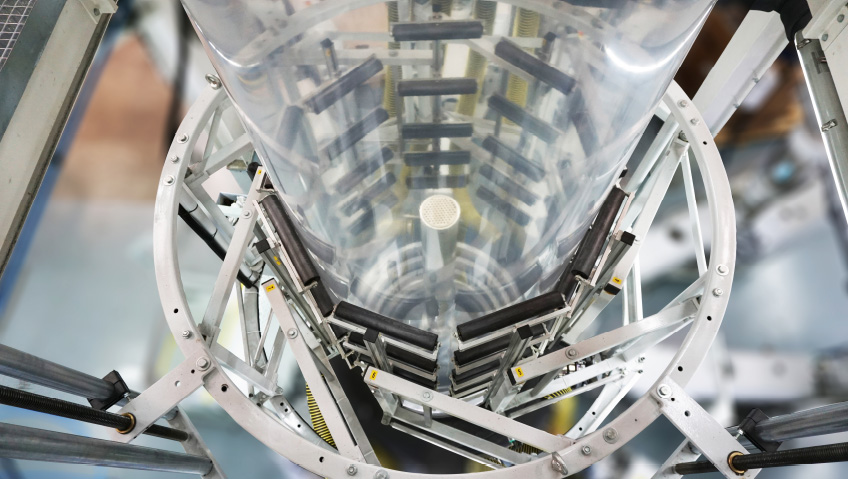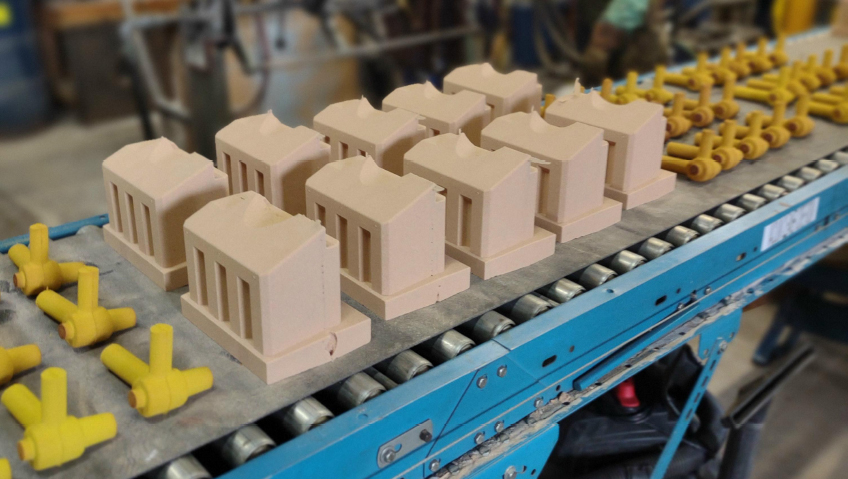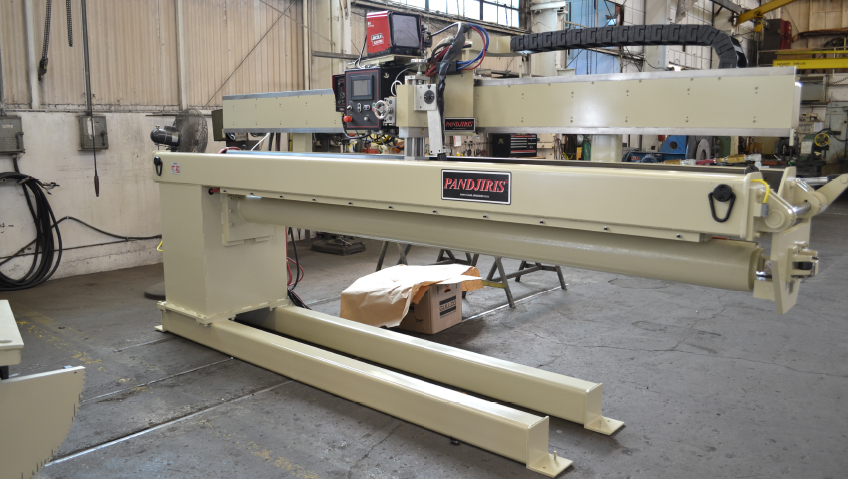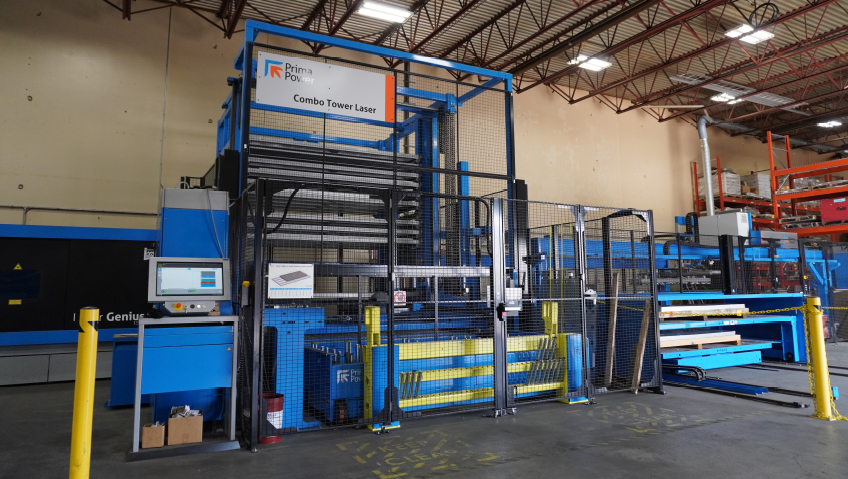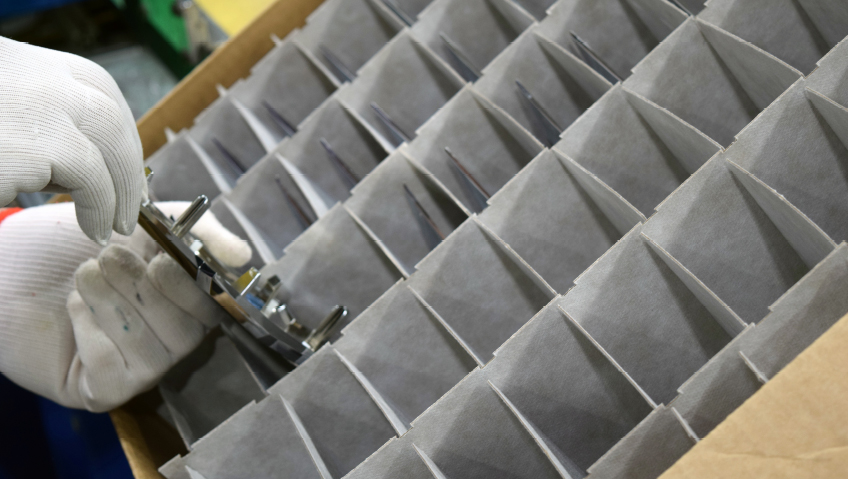For 40 years, Macro Engineering & Technology has helped film and sheet makers in the consumer goods, medical, industrial, and food packaging industries achieve their production goals. As a leading provider of components and systems for value-added films and sheets, Macro remains committed to partnering with each customer to give a tailored solution.
Founded in 1978, this Mississauga, Ontario-based company has transformed from a component supplier to a provider of complete extrusion systems, emerging as the market leader in high-barrier film-processing technology.
Macro has shown how many challenging processing issues can be solved by creative, technological innovation, building a reputation along the way for helping customers make differentiated products tailored for their needs.
“Our focus over the past 45 years has been custom machinery, and we find that there is an increasing need for that,” says Karen Xiao, Vice President of Technology. “As our competitors have been acquired by bigger companies, they’ve become more focused on standardized equipment in multiples of tens or twenties and by doing that, there’s very little engineering that’s required. Everybody gets the same equipment.”
But as the world changes—especially in the past 10 years and even more so after COVID—Macro is finding that more customers are asking for customization of different types of equipment from the extrusion side or the downstream side, with greater emphasis on automation from the winding side.
“We have a lot of projects focused on increasing efficiency and also on avoiding operators having to lift heavy rolls and shafts,” Xiao says. “Many are asking for automated roll and shaft handling.”
Although the pandemic brought about numerous challenges, Macro has experienced record sales over the past three years. Balancing that profitability with customization presents challenges, however, and Macro addresses it with pre-engineering work before the order is even placed. The team makes sketches of the equipment they think the customer wants so they’re both on the same page and customers find it easier to zero in on exactly what they need.
“We also get to understand what the customer requirements are,” explains Xiao. “Then the salespeople can quote the equipment appropriately and more accurately. So we try to work around from specifying engineering as much as possible beforehand, and then during the process, get the customer involved, too. It is a win-win situation.”
Macro’s ability to differentiate itself from its competitors, including by creating custom machinery to accommodate potential changes, is one of the keys to its success, particularly when compared to companies that use standard equipment and don’t deviate from the norm.
“In our case, we like to sit down, understand the customer’s needs, and work together before we quote on specific equipment,” says Martin Baron, Director of Sales. “I think that’s one of the biggest differences. We had a case recently where the customer didn’t have a lot of space in their facility. A piece of equipment they were considering was too tall, and they couldn’t accommodate it. So we came up with a different design to overcome that problem, changing the design of this specific machine and making it work in a different way. That was, of course, very well received.”
Macro’s wide range of capabilities, from 24-inch lab equipment to geomembrane applications, with the largest measuring eight meters, assists in this entire portfolio.
As sustainability takes hold in industries around the world, Macro is also looking to expand new technology which involves more sustainable products and collaboration on recycled and recyclable items as well.
“Because of our customers’ and our nature, we’ve been involved in biodegradable materials like PLA (polylactic acid) which increases bio-content,” Xiao shares.
Because it can be made at a reasonable cost using renewable resources, PLA has gained popularity as a material. Though it is still not a commodity polymer, PLA had the greatest consumption volume of any bioplastic in the world in 2021. It has a low melting point, good strength, minimal thermal expansion, good layer adhesion, and great heat resistance when annealed, plus it can be recycled or composted.
“We’ve always looked at biodegradable materials, and recently, with our customers requesting the addition of PCR (post-consumer recycled) material, we’ve also started to look at incorporating twin screw extruders into the process,” says Xiao. “It’s not a stretch for us, because we’ve dealt with twin screw in extrusion systems before.”
Twin screw extruders bring remarkable capabilities to mixing due to their wide variety of specialized screw designs including gear mixing components, kneading blocks, and reverse screw elements. This is how the extruder can accomplish such precise and accurate shearing and mixing.
“Also, some of these biodegradable materials are temperature-sensitive; we are used to dealing with extreme cases like Saran PVdC,” Xiao says. “With a material that extreme, the process window is very narrow. We’ve had experience with biodegradable materials and they’re pretty much within the range of our design scope already. It’s not a big stretch, because our product base is extensive.”
The demand for novel plastic structures and increased production is rising as flexible polymer packaging continues to overtake paper, metal, and glass packaging in market share. With the rising demands of the food packaging business come new challenges in safeguarding the food from microbiological deterioration, physical harm, and chemical alterations, as well as providing shelf appeal.
“It’s good to see in the past couple of years that a lot of the big chemical companies have started introducing FDA-approved materials derived in part from PCR,” says Xiao. “That makes things a lot easier.”
It’s not just industries embracing a more sustainable practice, however; customers are also interested, particularly in the food industry where soaring prices and the need for a longer shelf life are at the forefront.
“As you can imagine, a lot of these films are going to food packaging, so customers are also balancing between sustainability and food waste,” Xiao says. “There are certain materials—like nylon, especially—that have a key functional use in the film structure. Same with EVOH, and PVdC. If you want to take them out—especially PVdC, which is still the only material that has both superior moisture and oxygen barrier—then you have to balance between shelf life, the sustainable film, recyclable film, and food waste.”
Xiao notes that recently, more customers have been asking Macro what can be done in the sustainability path, which has prompted the company to look into some of its designs of the entire extrusion system to ensure they can accommodate more recycled material in an extruder.
As regulations are changing so frequently, customers aren’t sure where the regulations will end up even two years from now. To accommodate that uncertainty, flexibility is key and Macro’s equipment is increasingly designed in such a way that the whole extrusion line, not just the extruder or the die, can be re-configured.
What it comes down to is that while people want to replace PVdC, there isn’t a good substitution material yet. Customers are making do for now and while some types of applications can get away with replacing PVdC with a more sustainable product, others cannot, particularly in the food industry where PVdC is vital for keeping food fresh and standing up to the full shipping process.
“They’re looking at what kind of products can be more sustainable from the packaging point of view,” Xiao says. “And then what kind of products, maybe two or three years from now, can be more sustainable. We incorporate those changes now so when the machinery ships it is prepared for potential change.”
Customer service plays a substantial role in Macro’s daily business, and is greatly appreciated by customers who can talk to Macro’s design engineers directly. “Even before they place the order we have pre-engineering meetings with them so the designers get to talk to the customers, and it really helps,” says Xiao.
Along with changing regulations, Macro is still navigating the challenges of maneuvering through the supply chain issues following the pandemic. In the past few years, the company has been looking at different suppliers to eliminate the need for a single source of equipment for items such as CPUs, controllers, control modules, and drive modules.
In the years ahead, innovation, creativity, and customization will remain at the forefront for Macro.
Currently building a new lab line focused on sustainability, Macro’s impressive accomplishments include being one of only two companies in the world to pioneer the development of the dual lip air ring and also developing the first PVdC extrusion coating line to produce barrier PVC sheet for blister packaging in the pharmaceutical industry. The future promises much innovation; the demand is always there.
“As we are a machinery producer, we want to work with our customers as well as the resin [sector] to develop sustainable film,” says Xiao. “We want to use the pilot line to help customers, and to help ourselves develop different products and film structures. We’re hoping to have that ready for customer trials by mid-2024.”

